Carbon skis? Or skis with carbon in?
First of all, no skis are made of 100% carbon. Or anything like 100% carbon, for that matter. For the most part, when we talk about carbon in skis we’re talking about the layers of laminate used to bind other elements of the core and which help to decide the ski’s principle properties – the degree to which it can flex, for example. Carbon laminate layers are put down between core and topsheet, and core and sole. The vast majority of skis are built with laminates of fibreglass. Glass fibre is a durable composite. Cured with epoxy, it bonds layers and makes for a ski of dependable structural integrity. It brings stiffness to the table, too, while maintaining a good dynamic feel. Fibreglass serves to damp vibration, too. This helps to mitigate against, say, choppy tips when you’re barrelling downhill with parallel skis or attempting to descend with dignity over refrozen snow resembling wind on a shallow lake. The combination of fibreglass and epoxy, however, can add weight. Weight is by no means a dealbreaker, true – but it’s nice to have fresh legs when you get back to the treelinet.
Typical woven fibreglass laminate.

Carbon saves weight
“Carbon skis” are skis built with laminates of carbon composite rather than glass fibre. The topsheet is bound to the core by carbon laminates. So are the sole and the core. If the skis are built properly, carbon skis will have great longevity. But the principal advantage is weight. One can expect to save about 150g, more or less, in every area where the glass fibre is replaced with carbon. This may mean something like a saving of 400–800 grams on a pair of skis – which is not to be sniffed at by those of us intending to make long summit tours in Norwegian conditions. But, again, as every ski designer knows, and as every skier can confirm, you can’t have it all. Carbon is stiffer than fibreglass. It doesn’t damp as nicely. The dynamic properties of fibreglass laminted skis are sacrificed to the god of weight in carbon skis. That chattery, squirrelly sensation you experience at light-speed in difficult conditions is one of the disadvantages of carbon fabrication. An expensive carbon ski is not necessarily the solution; we pay for that damping, elasticity and feel with weight. Skis design is always compromise.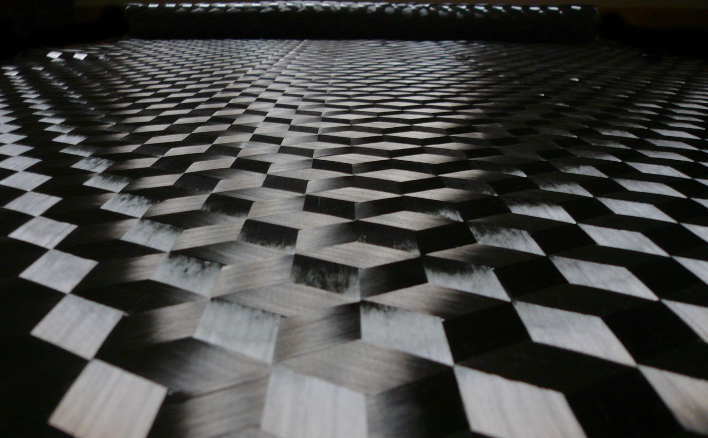
Triaxial carbon laminate. Woven carbon.
Other materials?
Is there a way to have your cake and eat it? Is there a way to have the lightness of carbon fibre laminates and the stability and damping properties of fibreglass laminates? Well – yes and no. Many ski manufacturers add additives to the carbon composite, or build the core with wood known for its damping properties. For us, without using fibreglass, “tricks” will only get you so far. Glass fibre offers the skier a better compromise between weight and the other properties that allow us to descend with control and pleasure. Our experience is that one always has to use some fibreglass anyway!So what’s best?
By definition, there’s no such thing as a “carbon ski”. Just skis with more carbon than glass fibre, which tend to be lighter than comparable skis. In ski production, there’s a consensus that carbon has its place – as long as one maintains a light hand. Enter carbon fibre strings. Experience suggests that carbon fibre strings laid on either side of the core are a good solution here. 3.5cm to 8cm-wide strings of carbon afford the ski properties that fibreglass can’t. This means less fibreglass, and less weight, while preserving some of the downhill characteristics, in, say, alpine touring skis. Better this than solving weight issues with a lighter wood core and thinner skis.
Carbon ‘strings’ – straps of carbon.
Making carbon skis with carbon
Take advantage of the beneficial properties of your materials
Ski manufacturers love technical terms. So allow us to present “hybrid fibre” – laminates of fibreglass and carbon fibre, weighted proportionallt towards the fibreglass. Glass fibre laminate with carbon strings in strategic areas is the standard solution for the vast majority of quality skis on the market. The aim is a stable ski with a predictable, secure, dynamic feel. Using unidirectional carbon strings with a ratio of around 90% glass fibre to 10% carbon fibre you can reinforce the area under the binding while keeping weight down. These makes for skis with good downhill properties.“Carbon skis”
Some manufacturers choose to make skis with 100% carbon fibre reinforcement. These are skis for rando-race people, people who prioritise the ascent over absolutely everything else, and people with dependable access to soft snow for whom stability issues aren’t so much of an issue.The golden mean
The last option is a middle ground: a 70%–30% mixture between glass and carbon fibre. 20% less glass fibre than the first alternative is achieved by replacing this glass fibre with triaxial carbon fibre (something usually only employed when designing longer and stiffer skis) for extra support. The weight reduction will then be somewhere between 50–100 g on a pair of skis. This isn’t a bad solution for summit tours when the peak and the descent are equally prized.Conclusion
There’s no such thing as a “carbon ski”. The core of the ski will always consist of wood (with honourable mentions for foam and other materials). Carbon fibre plays a part in the laminates and binding materials in many modern skis. Components such as the side walls play an equally important role in the feel and properties of a pair of skis, too. The amount of carbon in your skis has consequences for downhill performance. It can make the skis lighter – but it’ll drastically affect the way the ski behaves. Carbon can make skis stiffer, more rigid, which is a desirable thing in many circumstances. But too much carbon can make the ski less forgiving, more squirrelly, less stable in hard conditions. Stability at speed can suffer especially. Everyone’s susceptible to marketing or being blinded by science at the point-of-sale in a ski shop. So it’s worthwhile getting a good idea of what carbon in a ski can mean. For getting to the summit as fast as possible, or for longer tours, carbon has something to offer. But if you prioritise the pleasure of the descent, then discover where the carbon is, and what that carbon’s intended much “carbon ski” it is. Our recommendation is to buy a ski with at least some fibreglass and good sidewalls. But, like every winter and every mountain, all skiers are different. If you have any questions about skis, you can always contact us. We know a thing or two about ski manufacture and we’re more than happy to help you.
Mounting bindings on cross-country BC skis
If you’re going to mount bindings on cross-country skis built for breaking trail, you have a choice. You can let professionals do it for you and avoid water damage to the wooden core, screws sitting proud of the holes or crooked bindings… or you can bid farewell to your warranty cover, prepare the polyurethane glue and drill, and read on…
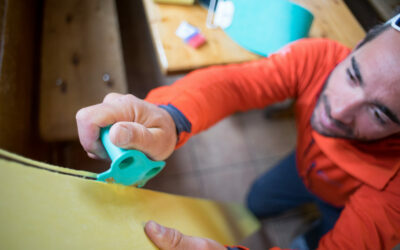
Tailoring long skins for alpine touring
Wondering how to tailor your skins for alpine touring? Here’s an overview – care and trimming long skins for touring skis.

Prepping and waxing cross-country skis for the backcountry – simply
When we wax cross-country BC skis, the best approach is often the simplest. If you’re in the mountains for several days, you want something that works, well enough, without fuss, for most of the day. Luckily this isn’t rocket science
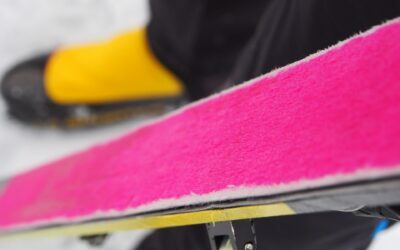
Choosing the right skin
Short skins have revolutionised trips to the backcountry on nordic skis. Long skins get you to the top. You can nail gliding, climbing, pulling, gripping, poor conditions, good conditions, days when you’re feeling too lazy to wax. We break down material, length, width, care, and everything else you’ll want to know.
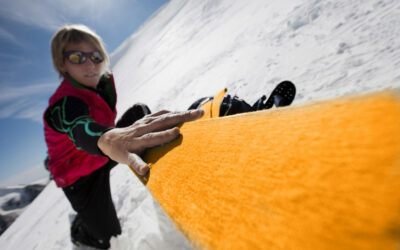
Myths about skins – busted
Not everything you hear about skins is right. We’re here to dish the skinny on skins, busting some misconceptions about your skins, complete with counter-evidence and tips garnered through trial and error in real snow, by real skiers, in actual Norway.
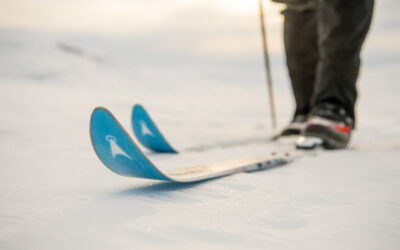
Choosing bindings for cross-country BC skis
Not certain which bindings choose for cross-country skiing in the backcounty? Confused by the difference between NNN-BC or 75mm bindings? Cable-curious? Find all the answers here!